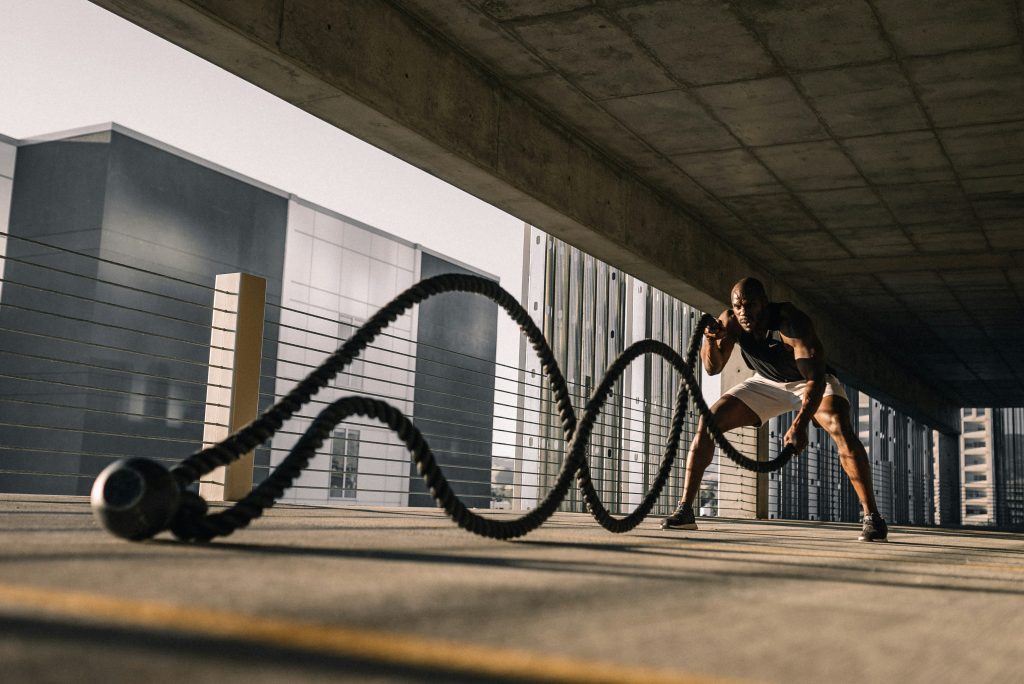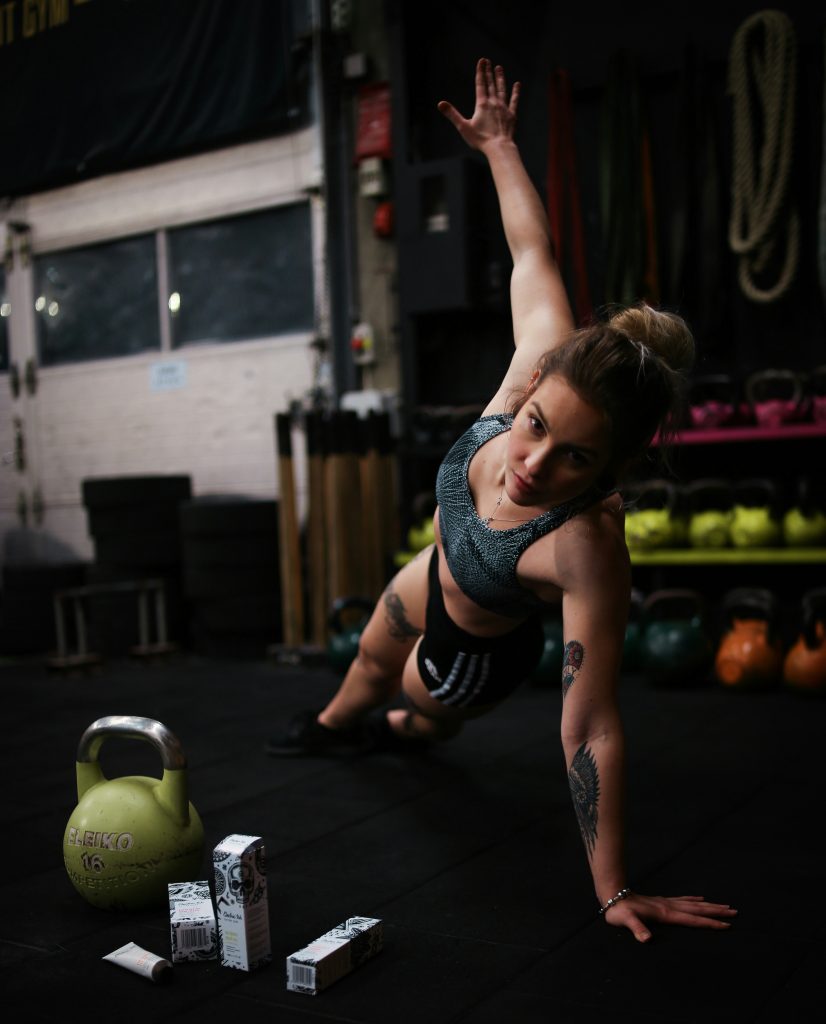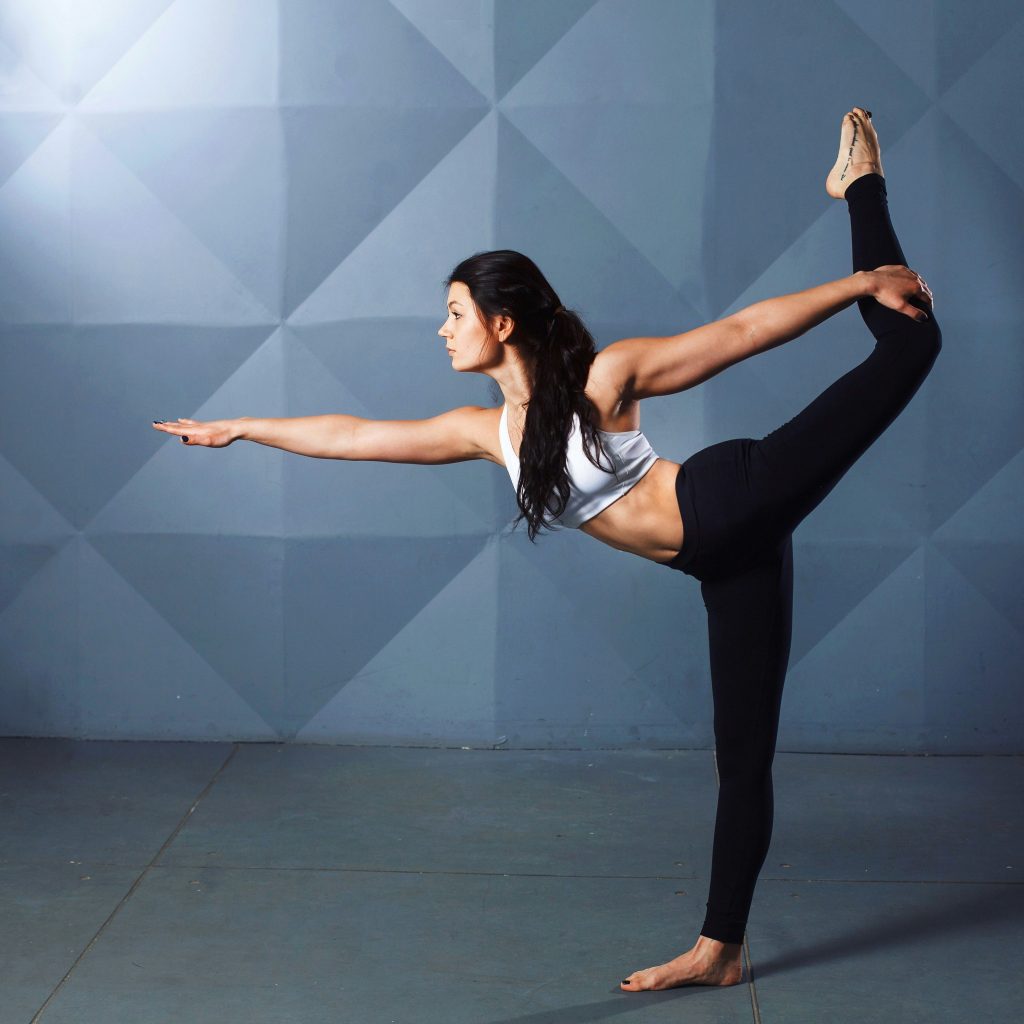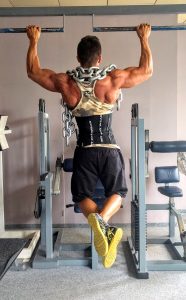If you’re searching for the secret to sculpting your dream six-pack abs and achieving a strong core, then look no further. In this article, we’ll answer one of the most commonly asked questions: How can you ensure you’re effectively targeting all areas of your abdominal muscles? From tips on selecting the right exercises to maintaining proper form, we’ve got you covered. Get ready to transform your midsection and unlock your full ab potential!
Benefits of working all areas of your abs
When it comes to developing strong abdominal muscles, it’s important to work all areas of your abs. This includes the rectus abdominis, external obliques, internal obliques, and transversus abdominis. By targeting each of these areas, you can experience a variety of benefits that go beyond just having a toned midsection.
Improved core strength
Working all areas of your abs helps to improve your overall core strength. Your core muscles act as a stabilizing force for your body, assisting in proper posture, balance, and alignment. By strengthening your abs, you’ll also improve the strength and stability of your spine, which can help prevent injuries and improve your performance in other activities.
Better posture
A weak core can lead to poor posture, which can result in a host of problems, including back pain and misalignment. By working all areas of your abs, you’ll develop the strength needed to support your spine and maintain proper alignment. This can lead to improved posture, increased confidence, and a more attractive physique.
Reduced lower back pain
Lower back pain is a common issue that many people experience due to weak core muscles. When your abs are strong, they help to support your lower back and reduce the strain and stress placed on this area. By targeting all areas of your abs, you’ll effectively strengthen the muscles around your lower back, alleviating pain and promoting a healthier back.
Increased stability and balance
Another benefit of working all areas of your abs is increased stability and balance. Your core muscles play a vital role in maintaining your balance and stability during various movements and activities. By targeting different areas of your abs, you’ll develop a well-rounded core that can improve your performance in sports, prevent falls and injuries, and enhance your overall coordination.
Understanding the different areas of your abs
Before diving into specific exercises, it’s important to understand the different areas of your abs and what they do. By familiarizing yourself with these muscles, you can target them more effectively during your workouts.
Rectus abdominis
The rectus abdominis is the muscle that runs vertically down the front of your abdomen and is commonly referred to as the “six-pack” muscle. It is responsible for flexing the spine and bringing the ribcage closer to the pelvis. By targeting this area, you can develop a defined midsection and achieve that coveted six-pack.
External obliques
The external obliques are located on each side of your abdomen, forming the outermost muscle layer. These muscles are responsible for rotating and bending the trunk, as well as providing stability to the spine. By targeting the external obliques, you can achieve a strong and defined waistline.
Internal obliques
The internal obliques are located underneath the external obliques, running in the opposite direction. They also contribute to trunk rotation and side bending, providing additional stability to the spine. By targeting the internal obliques, you can develop a more complete and balanced core.
Transversus abdominis
The transversus abdominis is the deepest layer of the abdominal muscles and wraps around the torso like a corset. It plays a crucial role in maintaining stability and providing support for the spine and internal organs. Strengthening the transversus abdominis can help improve your overall core strength and stability.

Exercises to target the rectus abdominis
To effectively target the rectus abdominis, try incorporating the following exercises into your workout routine:
1. Crunches
Crunches are a classic abdominal exercise that specifically targets the rectus abdominis. Start by lying on your back with your knees bent and feet flat on the floor. Place your hands behind your head, keeping your elbows wide. Engage your abs and lift your head, neck, and shoulders off the ground while exhaling. Hold for a moment, then slowly lower back down.
2. Sit-ups
Sit-ups are another popular exercise for targeting the rectus abdominis. Lie on your back with your knees bent and feet flat on the floor. Place your hands behind your head or crossed over your chest. Engage your abs and lift your upper body off the ground, bringing your chest towards your knees. Slowly lower back down with control.
3. Leg raises
Leg raises are an effective exercise for targeting both the lower abs and the rectus abdominis. Start by lying flat on your back with your arms by your sides. Lift your legs off the ground, keeping them straight and together. Slowly lower your legs back down without letting them touch the ground. Repeat for the desired number of repetitions.
4. Plank variations
Plank variations, such as the standard plank or plank rotations, engage the entire core, including the rectus abdominis. Begin in a push-up position, with your hands directly under your shoulders and your feet hip-width apart. Engage your abs and hold your body in a straight line from head to toe. Start with shorter holds and gradually increase the duration as you build strength.
Exercises to target the external obliques
To target the external obliques, incorporate the following exercises into your workout routine:
1. Russian twists
Russian twists are an effective exercise for targeting the external obliques. Sit on the ground with your knees bent and your feet flat on the floor. Lean back slightly while keeping your back straight. Hold a weight or medicine ball in front of your chest. Twist your torso to one side, bringing the weight towards the ground beside your hip. Return to the center and twist to the other side. Repeat for the desired number of repetitions.
2. Side plank variations
Side planks target the external obliques and help improve stability and balance. Start by lying on your side with your forearm on the ground, elbow directly under your shoulder. Extend your legs out straight and stack your feet on top of each other. Lift your hips off the ground, creating a straight line from head to toe. Hold for the desired amount of time, then switch sides.
3. Bicycle crunches
Bicycle crunches are a compound exercise that targets both the rectus abdominis and the external obliques. Lie on your back with your hands behind your head and your knees bent. Lift your shoulders off the ground while bringing one knee towards your chest and extending the other leg out straight. Rotate your torso, bringing the opposite elbow towards the bent knee. Alternate sides in a pedaling motion.
4. Woodchoppers
Woodchoppers mimic the movement of chopping wood and are an effective exercise for targeting the external obliques. Stand with your feet shoulder-width apart and hold a weight or medicine ball with both hands. Start with the weight at one side of your body, then rotate your torso and lift the weight diagonally across your body, finishing above your opposite shoulder. Repeat on the other side.

Exercises to target the internal obliques
Include the following exercises in your routine to target the internal obliques effectively:
1. Cross-body mountain climbers
Cross-body mountain climbers engage the internal obliques and provide a great cardiovascular workout. Start in a high plank position with your hands directly under your shoulders. Bring one knee towards the opposite elbow, crossing your body. Return the foot to the starting position and repeat on the other side, alternating in a dynamic and controlled manner.
2. Side plank with leg lift
This exercise combines the benefits of a side plank with the activation of the internal obliques. Begin in a side plank position, with your forearm on the ground and your feet stacked on top of each other. Lift your top leg off the bottom leg, extending it straight and engaging the muscles on the side of your body. Hold for a few seconds, then lower your leg. Repeat on the other side.
3. Seated trunk rotations
Seated trunk rotations specifically target the internal obliques and help improve flexibility as well. Sit on the ground with your knees bent and your feet flat on the floor. Clasp your hands together in front of your chest. Engage your abs and slowly rotate your torso to one side, then return to the center. Repeat on the other side, alternating in a controlled manner.
4. Resisted side bends
Resisted side bends are a great way to target the internal obliques with the use of resistance bands or dumbbells. Stand with your feet shoulder-width apart and hold a resistance band or dumbbell in one hand. Keeping your torso upright, bend to the side towards the hand holding the resistance. Slowly return to the starting position and repeat on the other side.
Exercises to target the transversus abdominis
To effectively target the transversus abdominis, incorporate the following exercises into your routine:
1. Vacuum exercises
Vacuum exercises are a great way to specifically target the transversus abdominis. Begin by standing tall with your feet hip-width apart. Take a deep breath in and exhale completely. As you exhale, pull your belly button towards your spine and hold the contraction for up to 30 seconds. Release and repeat for several repetitions.
2. Dead bug variations
Dead bug variations involve lying on your back and engaging the transversus abdominis to stabilize your spine. Start by lying on your back with your arms extended towards the ceiling and your legs bent at a 90-degree angle. Slowly lower one arm back behind your head and extend the opposite leg straight, hovering just above the ground. Return to the starting position and repeat on the other side.
3. Bird dog
Bird dog is a compound exercise that targets the transversus abdominis as well as the back extensors and glutes. Begin on all fours with your hands directly under your shoulders and your knees under your hips. Engage your abs and extend your right arm forward while simultaneously extending your left leg straight back. Hold for a few seconds, then return to the starting position. Repeat on the other side.
4. Abdominal hollowing
Abdominal hollowing is another effective exercise for targeting the transversus abdominis. Start by lying on your back with your knees bent and your feet flat on the floor. Place your hands on your abdomen. Engage your abs and gently draw your belly button towards your spine, creating a hollowed-out feeling in your lower abdomen. Hold for a few seconds, then release.

Importance of proper form and technique
To get the most out of your ab workouts and prevent injuries, it’s crucial to focus on proper form and technique. Here are some key considerations:
Engaging the muscles
Before each exercise, take a moment to mentally engage the muscles you’re targeting. Visualize the movement and focus on activating the correct muscles. By consciously engaging your abs, you’ll ensure that you’re effectively working all areas of your abs.
Avoiding excessive strain
While it’s important to challenge yourself during your workouts, it’s equally important to avoid excessive strain on your abs and other muscles. Start with appropriate weights and gradually increase as you build strength. If you feel any sharp pain or discomfort, it’s important to listen to your body and adjust accordingly.
Controlling the movement
Maintaining control throughout each exercise is key to effectively working all areas of your abs. Rather than rushing through the movement, focus on the quality of each repetition. By controlling the movement, you’ll maximize the engagement of your abs and minimize the risk of injury.
Breathing correctly
Proper breathing is often overlooked but plays a crucial role in engaging your abs and maintaining stability. In general, exhale during the exertion phase of the exercise (when you’re lifting, twisting, or crunching) and inhale during the relaxation phase. This helps to stabilize your core and promote proper muscle activation.
Incorporating compound exercises
Compound exercises, which involve multiple muscle groups, can be a valuable addition to your ab workouts. By incorporating these exercises, you can engage your abs in a functional and holistic way, while also targeting other muscle groups. Here are some compound exercises that can effectively work all areas of your abs:
Deadlifts
Deadlifts primarily target the muscles in your legs and back, but they also engage your core, including your abs. By maintaining a stable and engaged core throughout the movement, you’ll effectively work all areas of your abs. Start with lighter weights and focus on proper form and technique.
Squats
Squats engage your legs and glutes but also require core stability for optimal performance. By consciously engaging your abs and maintaining proper alignment during squats, you’ll effectively target all areas of your abs. Start with bodyweight squats and gradually add resistance as you build strength.
Push-ups
Push-ups are a great compound exercise that work your chest, shoulders, triceps, and core. By maintaining a stable and engaged core throughout the movement, you’ll effectively target all areas of your abs. Start with modified push-ups or push-ups on your knees if needed, and gradually progress to full push-ups.
Pull-ups
Pull-ups primarily target your back and arms, but they also require core strength and stability. By engaging your abs and maintaining proper form throughout the movement, you’ll effectively work all areas of your abs. If pull-ups are challenging, start with assisted pull-ups or inverted rows and gradually progress to full pull-ups.

Including stabilization exercises
Stabilization exercises are crucial for developing a balanced and functional core. By incorporating these exercises, you’ll improve your ability to maintain proper posture and stability in various positions and movements. Here are some stabilization exercises that target all areas of your abs:
Plank variations
Plank variations, such as the standard plank, side plank, or plank with leg lift, are excellent stability exercises that engage all areas of your abs. Focus on maintaining a straight line from head to toe and engaging your abs throughout the hold. Start with shorter holds and gradually increase the duration as you build strength.
Bridge variations
Bridge variations primarily target the glutes, hamstrings, and lower back, but they also engage the core, including all areas of your abs. Lie on your back with your knees bent and feet flat on the floor. Lift your hips off the ground, creating a straight line from your knees to your shoulders. Hold for a few seconds, then lower back down. To make it more challenging, try single-leg bridges or bridges on an unstable surface.
Glute bridges with a stability ball
Glute bridges with a stability ball provide an added challenge for your core stability. Lie on your back with your heels on top of a stability ball. Lift your hips off the ground, pushing through your heels and engaging your abs. Hold for a few seconds, then lower back down. This exercise not only targets your glutes but also engages all areas of your abs.
Bird dog
Bird dog is a stability exercise that targets the entire core, including all areas of your abs. Begin on all fours with your hands directly under your shoulders and your knees under your hips. Extend your right arm forward while simultaneously extending your left leg straight back. Hold for a few seconds, then return to the starting position. Repeat on the other side, alternating in a controlled manner.
Designing a balanced workout routine
To effectively work all areas of your abs, it’s important to design a balanced workout routine. Here are some key considerations:
Targeting each area of the abs
Ensure that your workout routine includes exercises that specifically target each area of your abs, including the rectus abdominis, external obliques, internal obliques, and transversus abdominis. By incorporating exercises from each category, you’ll achieve a well-rounded and balanced core workout.
Varying exercises and intensity
To continue challenging your abs and seeing progress, it’s important to vary your exercises and intensity. This can include changing the exercises you perform, increasing the resistance or weight used, or adding new variations to existing exercises. By continuously challenging your abs with different stimuli, you’ll avoid plateaus and keep making progress.
Allowing adequate rest and recovery
Remember to give your abs time to rest and recover between workouts. Like any other muscle group, your abs need time to repair and adapt to the stress placed upon them. Aim to include at least one or two rest days per week, and listen to your body to determine if additional rest is needed. Adequate rest and recovery will help prevent overuse injuries and promote optimal muscle development.
Seeking professional guidance if needed
If you’re new to working out or have specific goals or concerns, it can be helpful to seek professional guidance. Personal trainers or fitness instructors can provide personalized guidance and create a workout routine that targets all areas of your abs effectively. They can also ensure that you’re using proper form and technique to prevent injuries and maximize results.
In conclusion, working all areas of your abs is essential for developing a strong, stable, and balanced core. By targeting the rectus abdominis, external obliques, internal obliques, and transversus abdominis through a variety of exercises, you can experience improved core strength, better posture, reduced lower back pain, and increased stability and balance. Remember to focus on proper form, incorporate compound exercises and stabilization exercises, and design a balanced workout routine that targets all areas of your abs. With consistency and dedication, you’ll be on your way to a stronger and more defined midsection.





